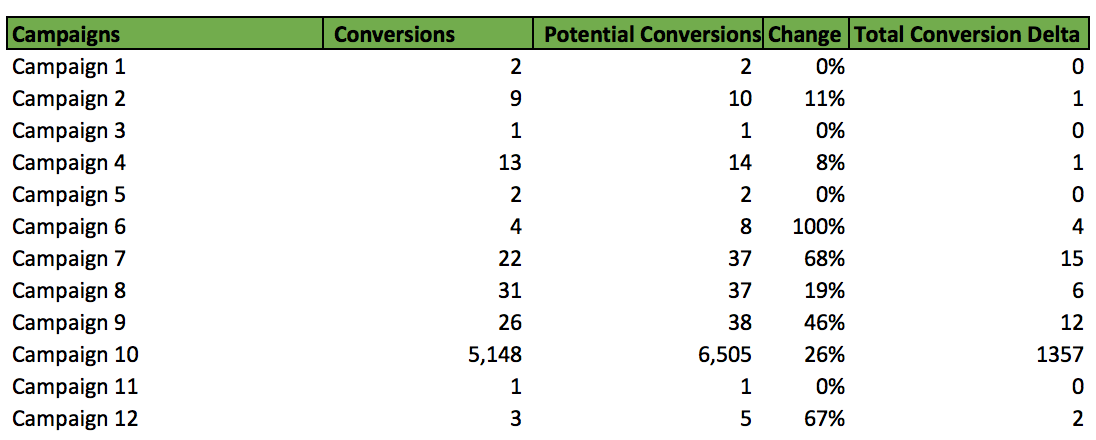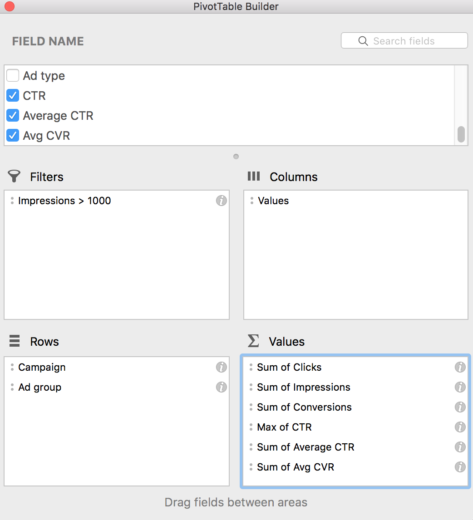Ad rotation is one of the forgotten settings. Everyone has a preference, “always rotate indefinitely” or “always optimize by conversions” but the chosen settings often reflect the manager’s default preference rather than the settings utility. Rather than a preference, the setting should be used as a tool and subject for further analysis.
This article will cover what options you have for ad rotation and how to quickly identify opportunities. It may sound like a big topic, and there are many opinions on the subject, but once you grasp the concept you’ll find it quite intuitive.
Ad Rotation Settings
Ad rotation settings come in a few forms. Using AdWords as an example we can:
- Optimize by clicks
- Optimize by conversions
- Rotate indefinitely
- Rotate and optimize
Each setting will alter an individual ad’s potential impression share in the ad group, which can have a big impact on performance.
Two Lines Of Thought
We can break down the settings into two major groups. One favors human control and manually selecting the winner. The second lets the system alter the ad rotation based on its own data.
Manual testing proponents use even rotation as the “fair test.” Each ad has the same potential to enter an auction. This should balance impressions more evenly giving each ad a shot to win the test and building a sufficient data sample. Of course, it’s only a chance to enter the auction and a poor ad may fail to qualify in as many auctions as the other ads.
Auto optimization proponents advocate the faster nature of the system. Optimization happens much quicker than a manual process. The system also has more data than the advertiser. Auction data, user behavior, and more could be used to identify actual ad performance. The system may also offer more nuance. There could be cases where a certain ad that performs worse on average is actually the best ad for a certain subset of users. The system could theoretically catch this and show that ad at only those times. The marginal gains of these optimizations can add up to substantial performance gains.
The downside of automatic optimization is the loss of control. This may upset the value gained by presenting and sticking to an explicit ad testing process such as CTC. Auto optimization may also change the way you set up your ad tests. Rather than A/B testing, you may opt to run a larger number of ads per ad group and cull the losing ads over time. This sounds minor but the impact to processes should not be understated.
Identifying Opportunities
What if you’d like to evaluate the two options in your own account(s)? Should you switch to optimize by clicks or rotate evenly?
We can evaluate with some rough math and for this blog post, a pivot table. Note that this could be completed more easily via PowerPivot or SQL but we’ll skip that for accessibility’s sake. If you are interested in using those technologies you can still use the same set up we use below.
Setting Up The Analysis
In this example, we’ll assume the account is set to rotate indefinitely. We want to evaluate the impact of switching to optimize by clicks. We’ll first download all of our ads and data. We can either use recent data from the last 30 days or a longer period.
Keep in mind:
- Any promotions running over the period
- Major changes to ad copy
- Ad formats
- Changes to ad status
You may also opt to segment by ad type, depending on how reliant you are on standard text ads at this point in time.
The Table
Now that we have the data, we can start building our pivot table! We’ll want to set up campaigns and/or ad groups as rows. This allows us to calculate the impact at each level as we may make different decisions per campaign. If an ad group is drastically different we may identify a restructure opportunity.
In our columns, we’ll insert total impressions, max CTR, and average conversion rate. You can include additional columns for reference but the three above are necessary. You can also segment by impression or click volume. This should limit the number of low volume ads with unrealistic CTRs, such as an ad with two clicks and four impressions. Below, I use a TRUE/FALSE flag for greater than one thousand impressions in the filter.
Calculating The Impact
We have all the data we need. The math here is pretty simple too. If we switch to optimize for clicks, the ad with a higher CTR should show more often. Assuming the account had the same number of impressions, we can calculate potential clicks by multiplying the total impressions by the max CTR of the qualifying ads.
Potential Clicks = Total Impressions x Max CTR
Now that we have maximum potential clicks, we can calculate the potential conversions by multiplying potential clicks by the average conversion rate.
Potential Conversions = Potential Clicks x Average Conversion Rate
or
Potential Conversion = Total Impressions * Max CTR * Average Conversion Rate
At this point, you can do a few calculations to examine the difference between actual and potential conversions and identify areas to change.
Why Average Conversion Rate?
You may be asking, why the average conversion rate, why not the actual conversion rate per ad? For this example, we’re assuming that conversion rate is dependent on the landing page and not the ad copy. Of course, this won’t work if you were testing landing pages in the final URLs, running very different ads such as promos, or inflating the ad CTRs by including words like “free.”
If you are more comfortable, you can use the conversion rate of the ad with the highest CTR. This may be appropriate if you have drastically different ad copy that may attract different types of visitors. You could also weigh them one way or the other saying that only a portion of the difference was due to the ad.
Have fun with it! You can always adjust your calculations over time as you gather more data for each round and get a better sense of this account in particular.
Making Decision Based On The Data
This type of analysis opens up new options for account management. Which is more valuable, the increase in traffic and conversions or the learning from an ad testing process? If there are major gaps between potential conversions and actual conversions it could change your tactics. If you were going into the busy season you may opt to rotate ads based on clicks in order to increase traffic and revenue. Or if the numbers are close you may opt to launch a new test going into that same period to maximize your ad testing. The key concept here is to better understand your options so you can make the best business decision and not be bound to default practices.





